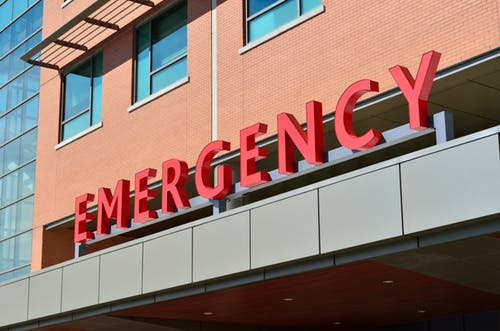What Are the Various Treatment Options for BPH?

Benign Prostatic Hyperplasia (BPH), an enlarged prostate, is a common condition affecting men as they age. This non-cancerous enlargement of the prostate gland can lead to a range of urinary symptoms, including frequent urination, weak urine flow, and difficulty emptying the bladder. The impact of BPH on a man’s quality of life can be significant, and understanding the available treatment options is crucial for those affected by this condition. In this article, we will explore BPH and the various treatment options available to manage and alleviate its symptoms.
What Is BPH?
Before discussing the treatment options with your urologist in Hamilton, you must understand BPH. The prostate gland is a walnut-sized organ located just below the bladder in men. It surrounds the urethra, the tube through which urine passes out of the body. As men age, the prostate gland can undergo non-cancerous growth, causing it to press against the urethra. This growth is termed Benign Prostatic Hyperplasia. BPH can lead to various urinary symptoms, impacting a man’s quality of life. While BPH is not cancerous, it shares some symptoms with prostate cancer, so proper diagnosis is essential.
Treatment Options for BPH
Treatment choice for BPH depends on the severity of the symptoms, the patient’s overall health, and their preferences. Here are various treatment options for managing BPH:
1. Watchful Waiting (Active Surveillance)
For men with mild BPH symptoms that do not significantly affect their quality of life, a “watchful waiting” approach may be recommended. In this approach, the patient and their healthcare provider continuously monitor the condition without immediate intervention. Regular check-ups and discussions help track any changes in symptoms, and if the condition worsens, treatment options can be reconsidered.
2. Lifestyle and Dietary Modifications
Sometimes, lifestyle changes can help alleviate mild to moderate BPH symptoms. These changes may include:
- Reducing fluid intake before bedtime to minimize nighttime urination (nocturia).
- Avoid caffeine and alcohol, which can irritate the bladder.
- Maintaining a healthy weight through diet and exercise.
- Kegel exercises to improve bladder control and urinary flow.
- Herbal supplements such as saw palmetto and beta-sitosterol may also be considered, although their effectiveness is still under debate.
3. Medications
Several medications are available to manage BPH symptoms. These drugs fall into two main categories:
- Alpha-Blockers: Alpha-blockers, such as tamsulosin (Flomax) and alfuzosin (Uroxatral), relax the muscles in the prostate and bladder neck, improving urine flow and reducing symptoms like urgency and weak stream.
- 5-Alpha Reductase Inhibitors: Medications like finasteride (Proscar) and dutasteride (Avodart) shrink the prostate gland over time. This can help improve urine flow and reduce the risk of urinary retention.
- Combination Therapy: In some cases, healthcare providers may prescribe a combination of alpha-blockers and 5-alpha reductase inhibitors for more significant symptom relief.
4. Minimally Invasive Procedures
Minimally invasive procedures may be recommended when medications are ineffective or symptoms are severe. These procedures are typically performed on an outpatient basis and include:
- Transurethral Microwave Thermotherapy (TUMT): TUMT involves using microwave energy to heat and destroy excess prostate tissue blocking the urethra. This procedure can improve urinary symptoms.
- Transurethral Needle Ablation (TUNA): TUNA uses radiofrequency energy to heat and shrink prostate tissue, relieving urinary symptoms.
- Water Vapor Thermal Therapy (Rezum): Rezum is the new prostate treatment for BPH in Hamilton, Ontario that uses steam to treat BPH. It has shown promising results in reducing symptoms and improving urine flow.
- UroLift: UroLift is a minimally invasive procedure that involves placing small implants to lift and hold the enlarged prostate tissue away from the urethra, relieving obstruction and improving urine flow.
5. Surgical Interventions
Prostate surgery for BPH may be considered for severe cases of BPH or when other treatments have not provided relief. Common surgical procedures include:
- Transurethral Resection of the Prostate (TURP): TURP is a traditional surgical procedure in which a portion of the prostate is removed to alleviate urinary obstruction. It is highly effective but may require hospitalization and a longer recovery period.
- Holmium Laser Enucleation of the Prostate (HoLEP): HoLEP is a minimally invasive laser surgery that removes prostate tissue obstructing the urethra. It offers similar outcomes to TURP but with potentially shorter hospital stays and faster recovery.
- Open Prostatectomy: An open prostatectomy may be necessary in cases of very large prostates. This involves the removal of the entire prostate gland through an abdominal incision. It is typically reserved for complex cases.
Conclusion
Managing BPH is essential to improve a man’s quality of life and prevent complications such as urinary retention and kidney problems. Treatment choice depends on the severity of symptoms, overall health, and individual preferences. Patients should work closely with their healthcare providers to determine the most suitable treatment approach, whether it involves watchful waiting, lifestyle modifications, medications, minimally invasive procedures, or surgery. With the array of treatment options available today, men with BPH can find relief from their symptoms and regain control over their urinary health. Early diagnosis and proactive management are key to effectively managing this common condition.

